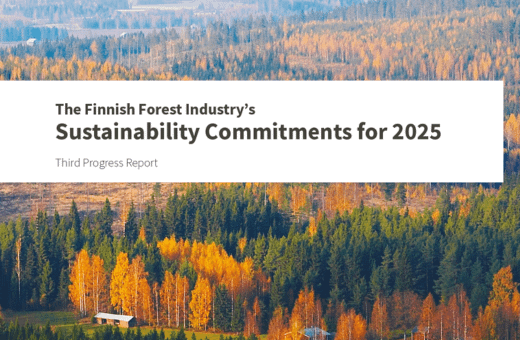Bioeconomy is delightfully included to 2040 climate target communication and Industrial Carbon Management strategy proposed by the European Commission. According to the Finnish Forest Industries, the focus must be kept on reducing fossil emissions and promoting climate solutions such as the forest-based bioeconomy.
The European Commission’s 2040 climate target communication suggests 90 percent emissions reduction compared to 1990 levels. Finnish forest industry has been a pioneer since the share of fossil fuels in energy production has already been pushed down to around 10 percent. Throughout Europe, similar progress should be aimed for.
According to the Finnish Forest Industries, EU should both phase-down fossil emissions and promote clean solutions such as forest-based bioeconomy. The Commission, too, finds that through the bioeconomy, it is possible to replace materials based on fossil resources and help other sectors reduce their emissions.
– Sustainable, forest-based bioeconomy must be integrated into the EU climate policy, industrial policy, and circular economy. Only then the full potential of the bioeconomy will be realized, among other things, as replacing fossil materials, enhancing material and energy self-sufficiency, and acting as part of the hydrogen economy, epitomizes Paula Lehtomäki, the CEO of the Finnish Forest Industries.
EU’s climate policy should strongly promote industrial investments.
The desire to strengthen the international competitiveness of industry is emphasized in the Commission’s messages. Lehtomäki supports securing competitiveness and advocates allowing companies a diverse range of climate measures.
– Policies should promote investments more and create less insecurity. Industrial investments, with their inherent risks, are already challenging endeavours. Regulation should not obscure but clarify the prospects of industry. Sufficient freedom should be given to member states and companies to seek suitable and cost-effective solutions. The detailed regulation with its multiple subgoals launched by the Fit for 55 -package should not continue, says Lehtomäki.
Counting on vulnerable forests sinks is risky.
Among the other things, proposed Industrial Carbon Management strategy covers the biogenic carbon capture and utilization. For forest industry, this is one potential way to build up new business in the future. It’s about significant opportunities, but economically risky, electricity-intensive, and technologically challenging business that should be promoted through incentives.
– The insecurities considering the forests in changing climate need to be noticed. Forests vulnerable to damages and fluctuating carbon sinks provide instable basis for climate goals. Active forest management that enhances forest health and growth is an important climate policy element. Additionally, in every corner of Europe, an obligation for regeneration, should be applied, suggests Lehtomäki.






